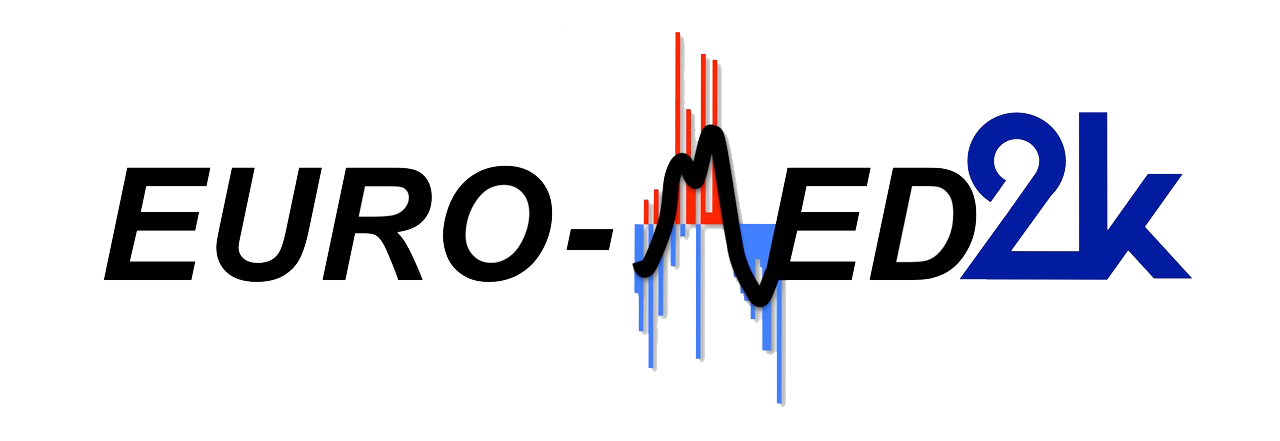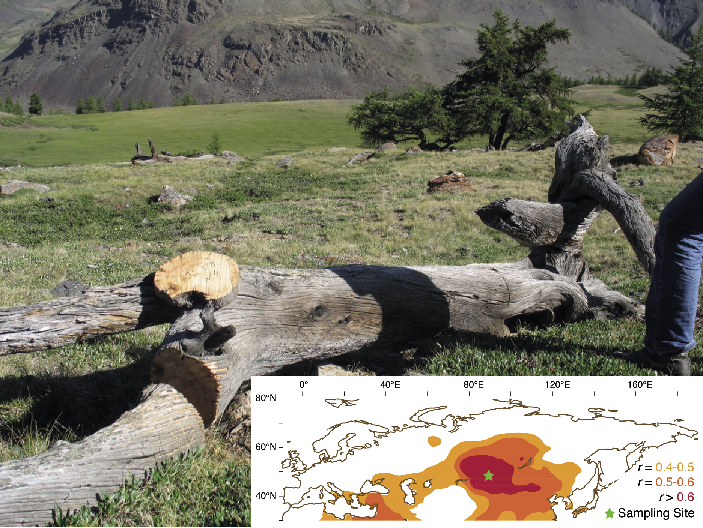- Home
- Publications
- PAGES Magazine
- Towards a Spatiotemporal Expansion of Temperature and Hydroclimatic Proxy Archives
Towards a spatiotemporal expansion of temperature and hydroclimatic proxy archives
Ulf Büntgen, J. Luterbacher, F. C. Ljungqvist, J. Esper, D. Fleitmann, M. Gagen, F. González-Rouco, S. Wagner, J. Werner, E. Zorita and F. Martínez-Peña
Past Global Changes Magazine
23(1)
34
2015
Ulf Büntgen1,2, J. Luterbacher3, F. C. Ljungqvist4, J. Esper5, D. Fleitmann6, M. Gagen7, F. González-Rouco8, S. Wagner9, J. Werner10, E. Zorita9 and F. Martínez-Peña11
Soria, Spain, 14-17 September 2014
By hosting our workshop, the CESEFOR Foundation (www.cesefor.com) made a considerable contribution to a successful start of Phase 2 of PAGES’ EuroMed2k working group. Soria was selected as location not the least because it is a region on the Iberian Peninsula where a marked drying trend has affected ecosystem functioning and productivity since the 1970s (Büntgen et al. 2012, 2013). As a consequence, some local agriculture foci already shifted from traditional timber harvesting to non-woody forest products, e.g. mushrooms, and irrigation during summer had to be intensified. The underlying processes forcing this climatic trend are, however, not well understood. Gaining further knowledge on such regional climatic patterns is one of the goals of the EuroMed2k working group. Therefore, and considering a broader spatiotemporal perspective, this working group aims at compiling a wide range of proxy data for providing a long-term perspective on the modern climate, performing model-data comparison assessments, and supplementing detection and attribution studies.
A total of 39 scientists from 11 countries with expertise in paleoclimatic data, reconstructions and climate models for the North Atlantic/European/Mediterranean sector and the western part of Russia attended the workshop. In contrast to the first project phase, the interest has changed towards the compilation and evaluation of high- to low-resolution terrestrial and marine proxy archives covering at least some centuries, but ideally several millennia. The workshop participants also acknowledged the value of integrating lower resolution marine records from the Atlantic Ocean and Mediterranean Sea that are longer than 2ka. At the same time, they were aware of the statistical challenges of combining annually resolved and lower resolution timeseries, such as the incorporation of different levels of temporal uncertainty inherent to different proxy archives.
EuroMed2k will extend the initial temperature-oriented proxy compilation towards high-, mid-, and low-resolution terrestrial and marine hydroclimatic archives, and expand the network beyond Eastern Europe including the Caucasus, Polar Ural, and Altai Mountains (Fig. 1). The working group aims to generate a comprehensive paleoclimatic database for the development of at least four independent reconstructions of annual and lower resolution temperature and hydroclimate. Moreover, the most recent generation of Earth System Climate Models, now spanning the last two millennia, incorporate hydrological changes in Europe. Those will allow proxy-model cross-comparison of overlapping periods, in-depth assessments of spectral properties (PAGES 2k Consortium 2014), and testing methods for empirical climate reconstructions in the context of regional-scale pseudo-proxy experiments (Gomez-Navarro et al. in press).
The working group plans to substantially expand the EuroMed2k database: around 70 records will be added, representing different resolutions and covering different age ranges from several centuries to most of the Holocene. The records will cover the area from 25-70°N and 10°W-45°E, with geographical foci on the Iberian Peninsula, Alpine arc, and Fennoscandia. Particular emphasis will be given to so far under-represented marine and terrestrial records of lower resolution to help fill seasonal, temporal, and spatial gaps in the existing network. An extensive compilation of sediment cores from both the North Atlantic and Mediterranean may indeed offer seasonally disjunct information on decadal to multi-millennial time-scales; and speleothems from the Near East (Göktürk et al. 2011) can contain winter signals and cover several millennia.
As a community-driven project, a key success factor of PAGES2k will be its public visibility. We therefore complemented our workshop with a public roundtable at the headquarters of the regional government, where members of the EuroMed2k consortium enthusiastically discussed climate issues with the regional media, representatives of the sylvicultural and agricultural sectors, delegates of the agro-food and myco-touristic industries, and an interested lay audience. PAGES paleoclimatologists were able to place the ongoing Iberian drought in a historical context and compare the regional Spanish conditions with trends in other parts of the world.
affiliations
1WSL, Birmensdorf and OCCR Bern, Switzerland
2Global Change Research Centre, Brno, Czech Republic
3Department of Geography, Justus Liebig University of Giessen, Germany
4Bolin Centre for Climate Research, Stockholm University, Sweden
5Department of Geography, Johannes Gutenberg University, Mainz, Germany
6Department of Archaeology and Centre of Past Climate Change, University of Reading, UK
7Department of Geography, University of Swansea, UK
8Institute of Geoscience, Faculty of Physics, University Complutense Madrid, Spain
9Institute for Coastal Research, Helmholtz Centrum, Geesthacht, Germany
10Department of Earth Science, University of Bergen, Norway
11Research Unit of Forestry Mycology and Trufficulture, Cesefor Foundation, Soria, Spain
contact
Ulf Büntgen: buentgen wsl.ch
wsl.ch
references
Büntgen et al. (2012) Nat Clim Change 2: 827-829
Büntgen et al. (2013) Glob Planet Change 107: 177-185
Göktürk et al. (2011) Quat Sci Rev 30: 2433-2445
Gómez-Navarro et al. (in press) Clim Dyn, doi:10.1007/s00382-014-2388-x

